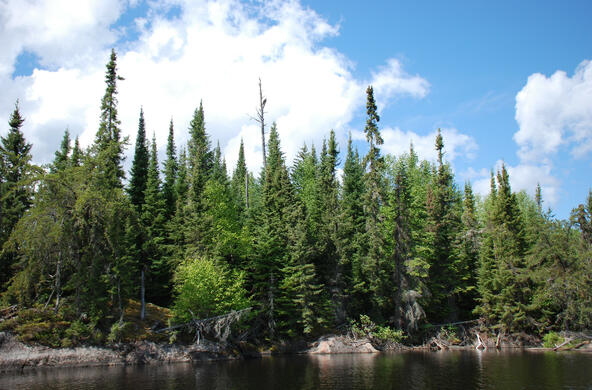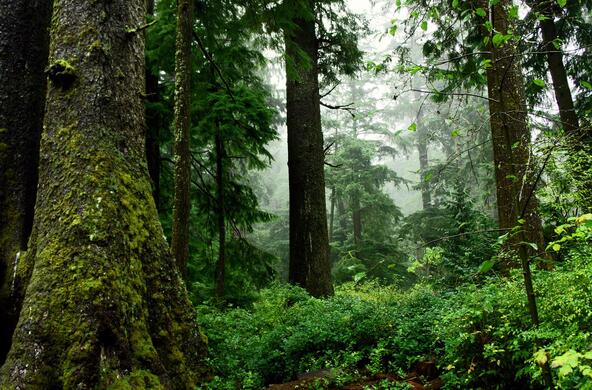One cannot help but wonder how biochemistry and molecular biology have made such rapid and quantum leaps in scientific understanding, while ecology has languished.
There are accepted factual truths in biochemistry. For example, no one doubts the underlying reaction of the Calvin Cycle (the dark reactions) of photosynthesis. Alternative reactions are not even mentioned in textbooks. Meanwhile, evolution and global climate change are under frequent attack by scientific “doubters,” who suggest that alternative theories must be given equal time, even if they are not based in science.
The difference in these fields of scientific inquiry lies in how the scientific method is applied. In laboratory experiments, a treatment is applied to replicate samples while other identical replicates (controls) get no treatment. When effects are observed, the cause and effect relationship is clear and unequivocal, and a conclusion can be achieved by the application of “strong inference,” that allows rejection of an initial hypothesis in favor of the necessary acceptance of the only alternative. The experiment can be repeated in any number of laboratories around the world.
Large-scale environmental science proceeds by a very different pathway. Often an observation—the forest is dying—is followed by a possible, perhaps even reasonable, explanation—the rain is acid. Like the biochemist, the ecologist might put a few replicate tree seedlings in pots with identical soils and water them with acidic waters. But, nature is more complex than a greenhouse experiment. The life and death of a tree is determined by many factors that vary in space and time, including other species in the forest that are excluded from pot experiments. Some of these other factors might negate the effects of the acid.
Only by applying artificial acidic rainfall to replicated large plots on different types of soil could one make an unequivocal link that the receipt of acidic rainfall is causing the death of a forest. In recent years, we have begun to see some welcome, large-scale experiments applied to big problems like CO2 effects on forest growth, iron effects on ocean phytoplankton, and tree diversity effects on productivity, but these are expensive and thus rare. Seldom can the results be interpreted as applying to all forests.
Not so, with global change ecology. Take for example the problem of global warming. Physicists have known for more than 100 years that carbon dioxide absorbs infrared (heat) radiation passing through a column of air. It is a logical step to suggest that rising carbon dioxide might warm the atmosphere when infra-red radiation leaves Earth’s surface. Further reflection might suggest other factors that could modify the situation on a planetary scale. Unfortunately, we have no replicate planets for an experimental test.
The best global change ecologists can do is to use the geologic record to show the correlation between periods of high CO2 in Earth’s atmosphere and warm conditions. We’ve all seen Al Gore’s graph that shows corresponding periods of high (and low) CO2 during past periods of global warmth (or cold) for the past 800,000 years. This remains unconvincing to those who believe that these nine cycles in Earth’s past temperature might stem from other factors, God’s intentions, or demonic intervention.
The opposition to global warming theory would melt in the face of an experiment with five Earth’s receiving no treatment and five Earth’s with CO2 added to the atmosphere. I have no doubt about the outcome of such an experiment, but at the moment, others in power positions of policy apparently do.
Lack of the ability to apply the traditional scientific method, which applies control and experimental treatments to a reasonable number of identical replicates, severely compromises well-intentioned efforts, like the Biosphere II experiment, to understand how our planet functions. Nevertheless, global change ecology must struggle onward using correlation to suggest cause and effect, with validation from the geologic record of the Earth’s past.
Ultimately we will prevail, but is there time?
References
Clark, J.S. 2007. Models for Ecological Data. Princeton University Press.
Hurlbert, S.H. 1984. Pseudoreplication and the design of ecological field experiments. Ecological Monographs 54: 187-211.
Platt, J.R. 1964. Strong inference. Science 146: doi: 10.1126/science146.3642.347
Underwood, A.J. 1994. On beyond BACI–sampling designs that might reliably detect environmental disturbances. Ecological Applications 4: 3-15







